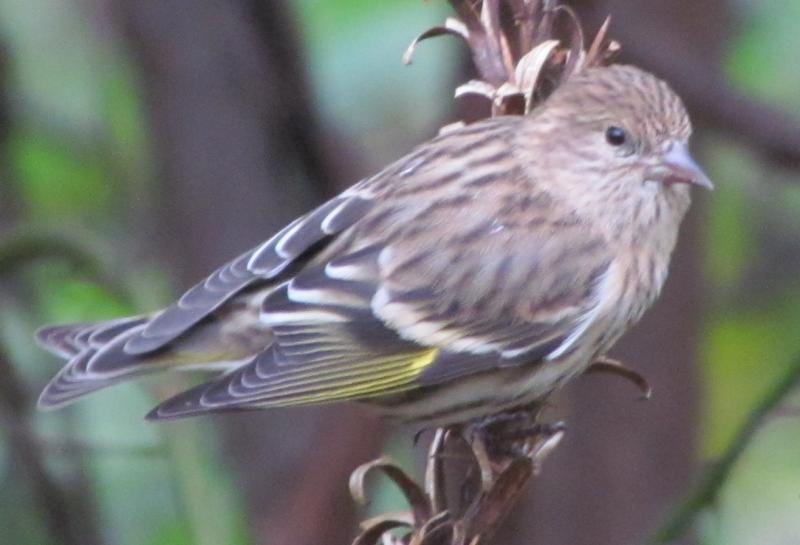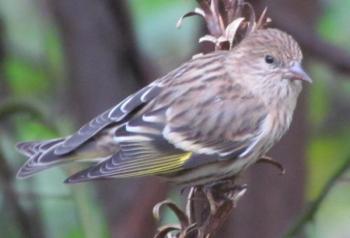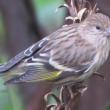About those uninvited guests
They appear about every two years.
They come in groups, sometimes numbering more than a hundred, and may stay in backyards for weeks. They arrive without invitation and with no advance notice.
Often times they are loud and engage in violent squabbles right in front of the neighbors. They will not take to indoor plumbing and let their food scraps just fall to the ground.
Fortunately, we aren’t talking about people. We’re talking about pine siskins, small, streaky brown finches about the size of the American goldfinch with sharp little pinkish bills used to eat seeds. Pine siskins are one of a group of mostly northern finches whose populations show a rather unusual pattern. About every two years, exceedingly large numbers of them will appear far south of where they normally nest and winter. The numbers during these influx years vary as do the geographic regions where the finches appear.
Biologists often describe these events as “irruptions,” which may sound more like violent volcanic activity than is intended. But the idea is that the birds irrupt from their normal range and into atypical places.
In a way, these events are more like the large-scale movements of human refugees out of places where food and water are no longer readily available, which may partly explain why a flock of pine siskins that finds your backyard bird feeders can polish off so many pounds of sunflower seeds every day.
A precise understanding of how and why pine siskins and other species show these 2-year cycles of irruption is still elusive. For example, the large numbers of long-distance migrants one year could be the result of a very successful breeding season that results in more birds than food in the breeding range.
Or the success of the breeding season may not matter, but instead the irruption could be due to a collapse in the natural food supply that would normally last them through the winter.
More likely, it is a combination of both.
Whatever the exact cause, the northeastern U.S. is hosting major numbers of pine siskins right now. Last week we glanced out our kitchen window to see about 75 of them squabbling over our bird feeders.
Birders from across Maine have been regaling each other for the last two weeks with tales of being descended upon by flocks of pine siskins. And though it’s hard to believe, small numbers have already made it as far south as South Carolina, Georgia and Mississippi!
There are also early indications that some other northern finches may be appearing in higher numbers in our area. Evening grosbeaks and purple finches have been spotted. Farther north in the state, pine grosbeaks have been seen as well.
Even if a flock of pine siskins or other northern finches in your backyard are chowing through your sunflower seed stash faster than a teenager eating French fries, enjoy them while you can. Tomorrow they may be gone, and you never know when you might see them again.
Dr. Jeff Wells is the senior scientist for the Boreal Songbird Initiative. During his time at the famed Cornell Lab of Ornithology and as the Audubon Society's national bird conservation director, Dr. Wells earned a reputation as one of the nation's leading bird experts and conservation biologists. Jeff's grandfather, the late John Chase, was a columnist for the Boothbay Register for many years. Allison Childs Wells, also formerly of the Cornell Lab of Ornithology, is a widely published natural history writer and a senior director at the Natural Resources Council of Maine. Together, they have been writing and teaching people about birds for decades. The Maine natives are authors of the highly acclaimed book, “Maine's Favorite Birds.”
Event Date
Address
United States

























